Roseville Electric gave a presentation of their proposed Liquid Management System (LMS) to the Roseville Coalition of Neighborhood Associations at the March 21, 2013, RCONA Board Meeting held at Martha Riley Center at Mahany Park. Approximately 35 board members and interested residents attended.
Matt Garner, Interim Power Generation Superintendent, gave a 55 minute presentation for the proposed Liquid Management System. This system would replace the current process for disposal of waste water from the Roseville Energy Plant. Matt’s slide show was followed by a question and answer period addressing the numerous concerns raised by the RCONA members and various residents attending the meeting.
The Power Plant generates up to 160 megawatts of electricity; it supplies 40-50% of the city’s power needs in summer, and all the power needs of the City in cooler times. The process of producing electricity uses a steam turbine cycle which requires water to cool it. The current process including discharge of the waste water produced costs $2 million to operate and maintain. The proposed LMS would cost $5.9 million to implement and reduce disposal costs to $200,000 per year, representing a great savings to the City.
Mr. Garner assured audience members that the system would meet all regulatory requirements and be closely reviewed by both the federal EPA and California Energy Commission. The application Roseville Electric submitted to the state in February has already been accepted as ‘administratively complete’. Actual technical review is now underway. Public meetings will be held with representatives of state agencies as the application proceeds.
Mr. Garner said any new system must meet four criteria, to
- Be technically feasible—a proven sound technology
- Be financially prudent
- Meet regulatory requirements
- Protect natural resources around the plant (including drinking water, streams, etc.)
Mr. Garner said although they looked at other alternatives, they found the LMS injection well process best fit all the criteria.
If the LMS is approved by all environmental agencies and City Council, the current zero liquid discharge system will still remain in effect as a back-up system for the first two years of the new system. Actual design details of the proposed Liquid Management system can be viewed at a Roseville Electric site (link included with others below).
Mr. Garner indicated they’d had a number of concerns already raised by residents and gave his responses to the most common ones:
- Would there be any long term effects or contamination into the aquifer? Because of the multiple layers of protection built into the system, and because this is not an earthquake prone region, the chance of possible contamination was extremely small. The equipment will be monitored 24/7 and meet all environmental requirements.
- What is the effect on the salt-water sub-level where the waste water is going to be pumped? Their geologist said what they will be pumping is an extremely small amount of water, like rain-water on an ocean, so it would be minimal. [Comment: a previous meeting disclosed the amount of waste water involved is 13,500 gallons per hour with roughly 10-20 tons weekly of minerals and waste products, running at 40% capacity of the City’s full needs.]
- Will this process involve ‘fracking’? Mr. Garner said the process is definitely not ‘fracking’. [Comment: numerous geological reports do refer to the underground injecting of waste water as a type of ‘fracking’ now being linked to earthquakes. See links to articles below.]
- What are the guidelines to ensure no earth resources are harmed? EPA requires annual testing for integrity of the system and complete 5- year test (including x-ray tests) for integrity; 24/7 monitoring; test fluids being submitted on regular basis; 2 test wells along-side of the injection wells for fluid sample tests to ensure no migration of fluids being put underground.
- When the system works at full capacity, what will the effects be as the City grows? The Energy Plant runs 40% of the time as and will not exceed that rate, even as the City grows.
Currently, they are in the permit application process, including design and final permits for construction, and then apply for City Council approval, and final procurement. Construction, certification and final testing will take 6-9 months.
After a final wrap-up of items, Mr. Garner took questions from the audience:
- Where is the system being used and how long has it been in use? This type of system has been used since the early 80’s; Lodi just started using a similar system last year. Mr. Garner said it’s a Class 1-non-hazardous injection well.
- What is current system? All the waste water is currently recycled back into the system; 10-20 tons of salt minerals every week are removed and go to land fill. LMS--High mineral content water will be injected underground into a contained space.
- What possible relation is the LMS to seismic activities? Michele Santangelo, an engineer on the project, indicated other sites have had issues, the soil didn’t substantiate it. However, they have done seismic studies within a 3- mile area around the project as required by the EPA; the closest fault line is actually 13 miles to the West, so she believes it is safe. They did admit the ground pressure would increase, and the EPA will be interested in the safety of that increased pressure.
- If there was a catastrophic incident in the system, would the aquifer water be contaminated? It was felt that even if an accident occurred, all the safety measures in place in the system would prevent any further contamination—our drinking water would still be safe.
- What testing methods will there be? In addition to the two injection wells, there will be two test wells (going to the aquifer level only) to monitor the quality of the aquifer level. They had no figures to provide of past accidents at other plants, but said anything humans touched could have adverse effects, and that’s why so many safe guards would be in effect, and they have to maintain funds just in case of incidences.
- What chemicals would be in the waste water? They said the EPA will say what can and can’t be included in the water allowed underground, including PH balancing chemicals.
- What information is available about failure of these systems? Mr. Garner said the EPA doesn’t have 5- or 10-year information, but they will require all safety measures to protect the aquifer -- that’s the key.
- Can you provide any information about the water pressure build up? The pressure hasn’t been determined yet until they do core tests. However, 225 gallons per minute are expected to be pumped underground (approximately 8 swimming pools a day), but it is a small amount for the size of the underground area.
- What other alternatives have been looked at? Pre-filtration was already installed; several types of evaporation and treatment ponds; cold-lime softening processes; 10 to 15 options were looked at. Over half of them had a fatal flaw or increased costs—the LMS was the only one that met all four criteria. The current liquid disposal method would stay in place for 1-2 years as back-up.
- Will the ASR wells for the (aquifer) have increased testing? Sean Bigley from Roseville Environmental Utilities said there are monitoring cells in their system, but they will get further information out as it will relate to the LMS and ensuring the safety of the aquifer.
- What will be the long range effects from natural electrolysis (salt damage, etc.) in the system? The minerals are already under pressure, and precipitation will be miniscule. Materials will be designed not to corrode.
- How long is the solution supposed to last? The life expectancy of the power plant itself is 20-25 years, and the LMS is expected to last as long as the plant.
- We’ve had reports of excess settling in homes and earthquakes due to prolonged water pressure building up—can we be reassured against this happening? You can’t compress water, but this is such a large area, the amount being injected should not cause problems.
- What is meant by ‘mineral enriched’ that will be in the water being injected and deterioration of the equipment? Will there be gaps underground to allow for the added waste water? Again, the EPA will require monitoring of chemicals, maintenance of equipment, and maximum pressure allowed.
Roseville Electric will have a display at the Earth Day event April 20, 2013, at Mahany Park. Questions can be sent to Matt Garner at (916) 746-1699, or emailed to liquidmanagementsystem@roseville.ca.us.
The following links have been added for you to obtain further information:
- Roseville Electric’s project overview of the Liquid Management System: www.roseville.ca.us/lms
EPA Guidelines:
Definition & types of ‘fracturing’:
- Hydraulic fracturing – Wikipedia http://en.wikipedia....aulicfracturing
- Food& waterwatch – Ban Fracking in California June 2012:
www.foodandwaterwatch.org/factsheet/ban-fracking-in-california
News articles re geological findings related to ‘fracking’:
- www.ldeo.columbia.edu/news-events/wastewater-injection-spurred-biggest-earthquake-yet-says-study
- www.businessinsider.com/fracking-wastewater-oklahoma-earthquake-2013-3
- www.propublica.org/series/injection-wells
- www.propublica.org/article/injection-wells-the-poison-beneath-us
- www.propublica.org/article/epa-finds-fracking-compound-in-wyoming-aquifer


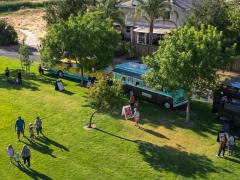
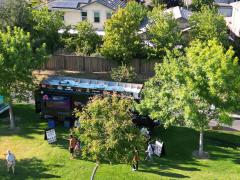
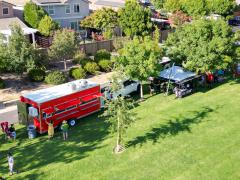
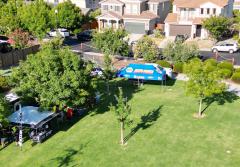
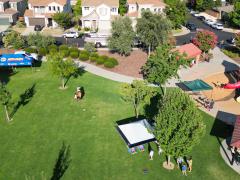
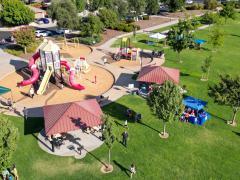
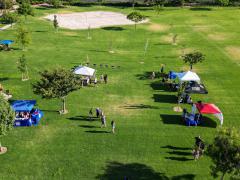
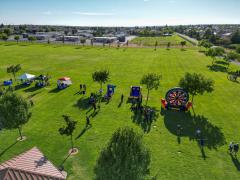
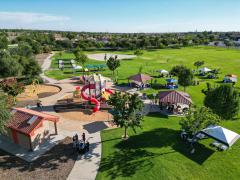
.jpg.296c4f9b814e93c3acee89acaac1d7e9.jpg)
.jpg.6b3ebaff1fd0e045cd8de51e87317c8a.jpg)
.jpg.1b55b3b439437918b8739148ddbf4171.jpg)
.jpg.793734edba13fb894471c2d86963beb0.jpg)
.jpg.a0deeb4f8c2ef2b5286ee415aa5bdef3.jpg)
.jpg.8f001df19b1cc4d522ddab16415656f3.jpg)
.jpg.607ba85a641473a3dce74f1e5c9ce1b3.jpg)
.jpg.e63821702a8055dc3839a87c52bbf86c.jpg)
.jpg.2149677f8044a79c93b9ad341cf1f2dd.jpg)
.jpg.2868d920626bba08a85a1aaed5391db6.jpg)
.jpg.b7e577504d33038e70c995c1cb0c3255.jpg)
.jpg.b06c4675de019177f8752c273ae3040d.jpg)
.jpg.13af6578261edcc098d86ede95e92d73.jpg)
.jpg.0a2155a39768c3c28f68d3cf20a6fbdb.jpg)
.jpg.b545a869278acaf5d9071e83cafb2378.jpg)
.jpg.2bc17dc7afb82ff85504e86ea3386f77.jpg)
.jpg.579b15c25b166b4db5b5837f5b425a40.jpg)
.jpg.56171e64df78f4aaed217a517c4bac59.jpg)
.jpg.8c548c5ab2e6f7a9813fa015857ad46f.jpg)
.jpg.ae7c2c1b1dd993e86dddae4a73651270.jpg)
.jpg.c3bf0d7fb41c08662a14de678b47ebb0.jpg)
.jpg.adc8fdbe54ede1d4ea166414870b6268.jpg)
.jpg.976b6d203b584bb3b95e72037ee7098a.jpg)
.jpg.75e5c92d60da119ec2bf3fde2b8efbe8.jpg)
.jpg.4348ef2ca3197a18004ededdeaa4e41b.jpg)
.jpg.74fdfe3d9fb982c6e29708f5ab219029.jpg)
.jpg.fea2c3c57714b3c4951fe7489592ee91.jpg)
.jpg.c09caa08007503b1d95eb68328d749ec.jpg)
.jpg.c4b4ea703eabe1f4d50dff2f05de700f.jpg)
.jpg.10e880365d144e5975bb69ef1201dfa0.jpg)
.jpg.46f7f8591acb1a18675bb82bb1a3d2ab.jpg)
.jpg.cbca1932c250203d4fb308e28a13258e.jpg)
.jpg.f1ca40f61b759b677e52e0e11655e271.jpg)
.jpg.1942a122c357e8307f1445ab8bb3bb6d.jpg)
.jpg.218a11559332d643e4964343378e4291.jpg)
.jpg.62287d46fedd6af165df9e335374bf5d.jpg)
.jpg.936bd69df0a5d4cf1899a38d4e766b45.jpg)
.jpg.00d9e487097a7111c1758523ba09550f.jpg)





Recommended Comments
There are no comments to display.
Join the conversation
You can post now and register later. If you have an account, sign in now to post with your account.